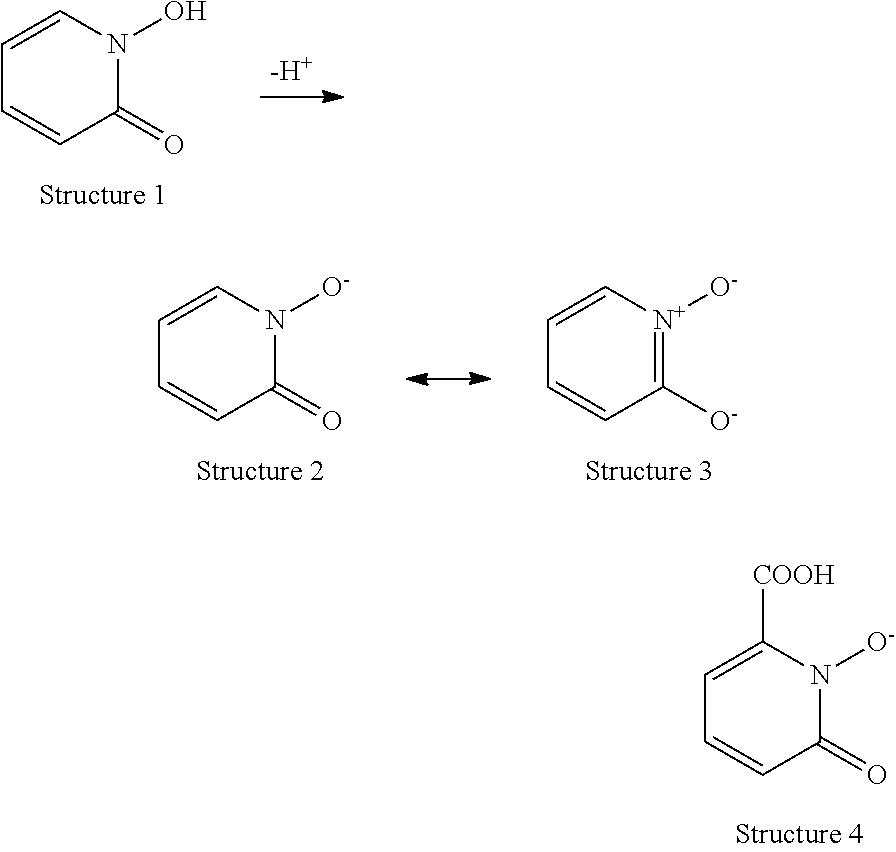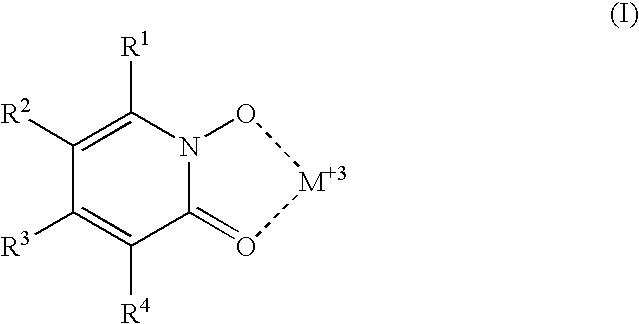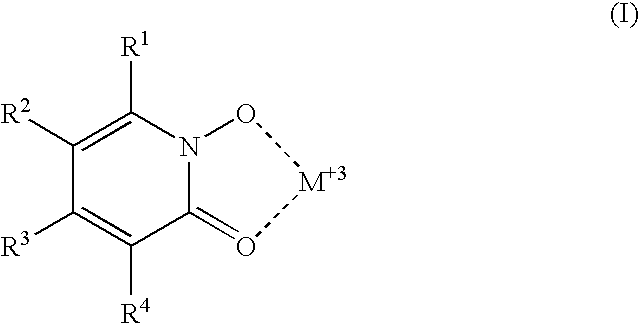Luminescent 1-hydroxy-2-pyridinone chelates of lanthanides
a technology of lanthanide and pyridinone, which is applied in the field of lanthanide complexes, can solve the problems of labeling, high cost, hazardous, etc., and achieve the effects of high quantum yield, high stability and solubility of lanthanide complexes, and superior stability in aqueous solutions
- Summary
- Abstract
- Description
- Claims
- Application Information
AI Technical Summary
Benefits of technology
Problems solved by technology
Method used
Image
Examples
examples
2-Bromopyridine-6-carboxylic Acid
[0268]A 9.7-g (0.048-mol) portion of 6-bromopyridine-2-carboxylic acid was added to a solution of 125 mL of CF3CO2H and 18 mL of 30% H2O2 and heated to 80° C. for 6.5 h. The reaction mixture was concentrated to ca. 25 mL by rotary evaporation and then added to 1 L of water. The product immediately precipitated as a finely divided, white crystalline solid. It was isolated by filtration, washed with water, and dried in vacuum. This yielded 10.2 g (97%) of product, mp 180° C. dec.
[0269]1H NMR (300 MHz, DMSO-d6): δ 7.70 (t, 1H), 8.24 (dd, 1H), 8.29 (dd, 1H). Anal. Calcd for C6H4BrNO3: C, 33.05; H, 1.85; Br, 36.65; N, 6.43. Found: C, 33.30; H, 1.88; Br, 36.37; N, 6.52.
1-Hydroxy-6-carboxy-2(1H)pyridinone
[0270]A 10.1-g (0.046 mol) portion of 2-bromopyridine-6-carboxylic Acid was dissolved in 175 mL of a 10% aqueous KOH solution, and the resulting solution was maintained at 80° C. overnight and then cooled in an ice bath and treated with 85 mL of concentrate...
PUM
| Property | Measurement | Unit |
|---|---|---|
| molecular weight | aaaaa | aaaaa |
| pH | aaaaa | aaaaa |
| temperature | aaaaa | aaaaa |
Abstract
Description
Claims
Application Information
 Login to View More
Login to View More - R&D
- Intellectual Property
- Life Sciences
- Materials
- Tech Scout
- Unparalleled Data Quality
- Higher Quality Content
- 60% Fewer Hallucinations
Browse by: Latest US Patents, China's latest patents, Technical Efficacy Thesaurus, Application Domain, Technology Topic, Popular Technical Reports.
© 2025 PatSnap. All rights reserved.Legal|Privacy policy|Modern Slavery Act Transparency Statement|Sitemap|About US| Contact US: help@patsnap.com



